Altitude and hiking; things you need to know
Hiking Practice
For some reason I can’t fathom people just want to climb mountains; they will often go off track anywhere, anytime just to reach the highest point they can. Mountains and hikers just seem to go together. If you ask people what walks are on their bucket list then high altitude treks like Mt Kilimanjaro in Africa, Everest Base Camp, as well as other various options in Nepal, Bhutan, the European Alps, and numerous hikes in South America all feature.
The term most commonly used for those who chase mountain tops is ‘peak baggers‘ and while I appreciate that sometimes the views can be spectacular from the top, I have often reached the summit only to find you can see nothing due to the prevailing weather conditions. My preference is to stand back and take in the views of these famous mountains. Which ever way you choose to view the surrounding scenery, from high up or down low, we are spoiled for choice. While many of these adventures don’t necessarily cover huge distances they can make up for it in the difficulty stakes by being at high altitude.
Over the past 20 years Gill and I have done high altitude treks in particular the Mount Salkantay Trek in Peru (4,600 metres) in 2006, as well as trekking in Bhutan (5,100 metres) in 2012. In regard to the impacts of altitude we learnt our lesson the hard way in South America being totally unprepared for the impacts that high altitude would have. With the 2006 experience under our belts we were much better prepared when we trekked through Bhutan.
Altitude sickness can become very serious. In fact it can sometimes have lethal impacts so we strongly suggest you visit an experienced travel doctor (not a GP) and seek professional advice if you’re planning on doing a high altitude trek.
This article outlines what we have learnt from our experiences hikimg at altitude and what we do to reduce the impacts when we go high.
What is Altitude Sickness?
Altitude Sickness is essentially illness caused by ascent to high altitude and can take on different forms from the mild to the severe and at its worst it can be life threatening. The following is an overview of what may occur.
- Acute Mountain Sickness (AMS) is the mildest form of altitude sickness. Symptoms may include:
- Headaches
- Nausea
- Vomiting
- Fatigue
- Dizziness
- Difficulty sleeping.
- High Altitude Cerebral Edema (HACE) High-altitude cerebral edema is a life-threatening complication of rapid ascents to altitudes higher than 2,500 metres but usually higher. The impacts of altitude can cause your brain to swell with fluid. These symptoms may, or may not, be preceded by AMS. Symptoms can include change in mental status with those affected acting in a confused, irritable or erratic way.
- High Altitude Pulmonary Edema (HAPE) High-altitude pulmonary edema is a life-threatening complication of rapid ascents to altitudes higher than 2,500 metres. In this case your lungs have been impacted with symptoms including:
- Shortness of breath
- Coughing
- A rapid, irregular heartbeat
- Blue lips.
Personal impacts
In 2006 Gill and I decided we were going to walk the Inca Trail in Peru. While most of the guide books recommend you allow your body acclimatisation time and gradually increase the altitude, due to a concern about limited trip spaces we decided upon landing in Lima (sea level), we would head straight to Cusco (3,399 metres) where most of the adventure tours for the Inca Trail were based.
When we landed in Cusco we were both pretty tired so headed to the hotel and went to bed almost straight away. Half way through the night I woke up and couldn’t work out why I was feeling the way I was. My symptoms included severe headache, nausea, inability to sleep and a high level of disorientation as well as an almost hallucinatory state that resulted in some very strange dreams. It soon occurred to me I was suffering from was altitude sickness but by the next morning I was back to normal.
Gill on the other hand had no impact at that stage but was effected a few days later once we had ascended another 1000 metres and ended up with similar symptoms which again lasted for about a day and quickly disappeared once we were at a lower altitude.
While we have worked out how to manage the impacts of high altitude I (Tim) still have an issue. Anytime I am trekking at an altitude over 3,500 metres I loose all energy when going up hill, something that doesn’t impact me at lower altitudes or for that matter when I head downhill.

Gill not feeling the best due to altitude sickness
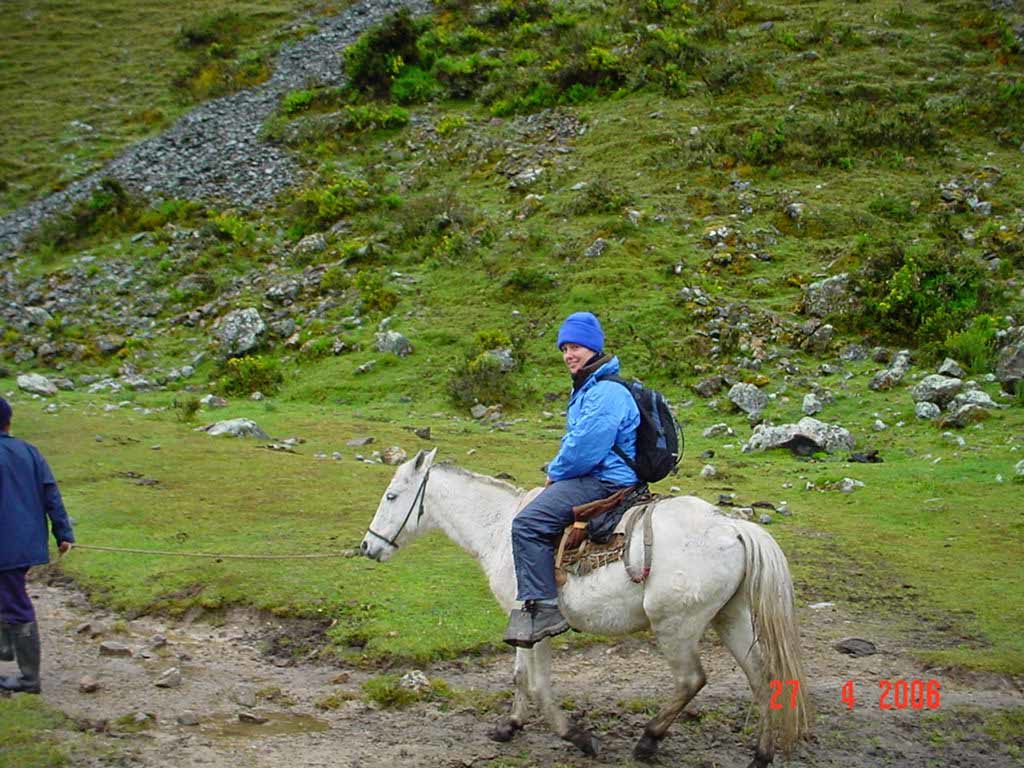
Don’t feel like walking then bring on the ‘Horsey man’!
Treatment
If you have mild altitude sickness, you should stay at the same altitude or go lower until the symptoms disappear. Rest, fluids and pain killers are likely to improve the symptoms. Do not continue to climb higher.
If you have signs of altitude sickness affecting your lungs or your brain, this is a medical emergency. You need help to descend as soon as possible. Breathing oxygen can help greatly.
Prevention
So if you are thinking of doing one of the well known high altitude treks, here are some things you should consider to make your trip a success.
1. Get fit
We all know we should be fit when we go on a hike but its particularly important when hiking at altitude. If you live in Australia training for altitude is impossible given our highest peak, Mount Kosciuszko, barely rates as an altitude hike being only 2,228 metres.
You can however train for hill climbs by putting on a weighted pack and doing regular hill ascents. Pack training is the best form of real life exercise to train. When Gill and I go on our longer trips we will start doing serious training around two months out with a fully loaded pack.
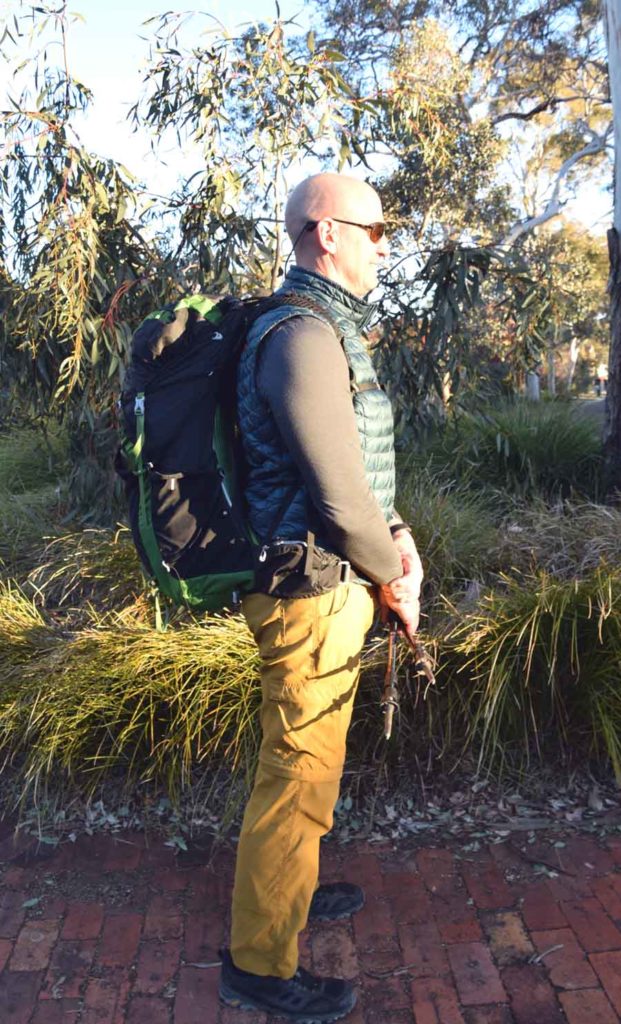
Pack Training
2. Lighten your load
Minimising the amount of gear you are carrying is a good recommendation on any hike but the less weight you carry, the less you will be exerting yourself. You may not go ultralight but spend time thinking about every piece of gear you are planning to carry and if you don’t need it, leave it home.
We recommend the maximum weight you carry on any hike is no more than 20% of your body weight although occasionally you may need to go heavier if you are carrying big loads of water.
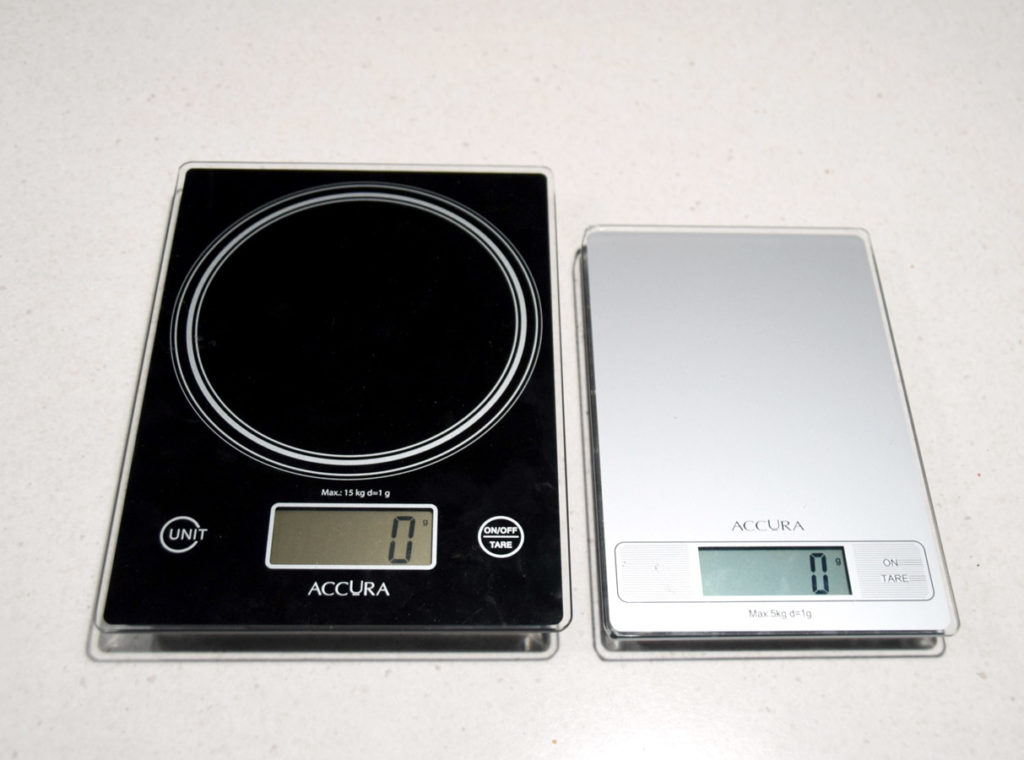
3. Acclimatise
Altitude training is Australia is nye on impossible given the highest point in Australia, Mount Kosciuszko, is only 2,228 metres with most areas in Australia being much lower than that. What this means is when you arrive in your country of choice, you should gradually build up to the high altitudes rather than go straight to the high point.
On high altitude hikes you will often hear the term ‘climb high, sleep low’. On our Bhutan trip we would often pick up most of our altitude early in the day and then either sleep at that altitude or descend down into camp for the night.
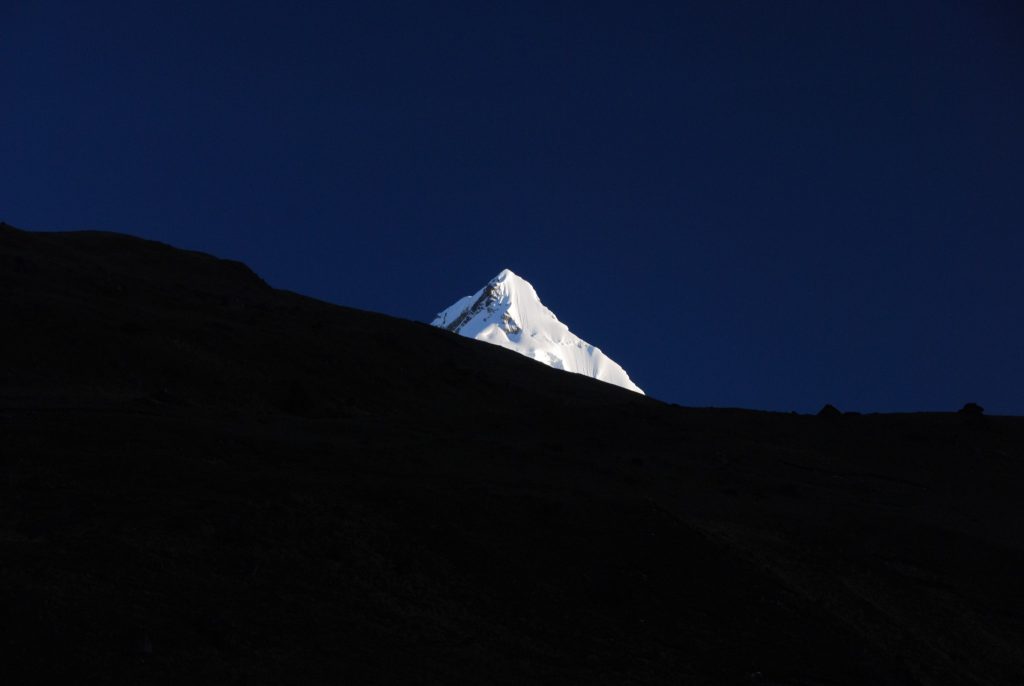
An unnamed mountain in Bhutan at sunrise
4. Avoid alcohol
On any trip longer than a single night I give up alcohol; I just feel better all-round. When altitude is involved, I give alcohol a miss.
5. Take it slowly
On a ‘normal’ hike (low altitude) I will increase my speed going up hill as I become more focused. However I find when hiking uphill at altitudes over 3,500 metres I loose all energy. As soon as I start going down hill or on the flat my energy returns.
What this means for me is that when altitude is involved, I need to slow my pace down particularly when I go uphill.
6. Visit a travel doctor
Before I go on a longer/more difficult hike I will always visit my doctor for a check up. When I go on a high altitude trip, I will visit a specialist Travel Doctor as they know what you are likely to experience and will offer you advice and options to get the most out of your trip.
One option your doctor may offer you to assist in the reduction of altitude sickness is a prescription for Diamox. Discuss this with your travel doctor to see if this is for you.
7. Know when to stop
When hiking at high altitude know when it’s time to call it quits. If symptoms of serious altitude sickness start to appear its time to head back down. Whatever you do do keep on going just because you feel obligated for any reason
8. Hydrate
Remember to drink plenty of water to minimise both the onset and impacts of altitude sickness. Sometimes we don’t hydrate sufficiently because the weather may be cool but it’s amazing how much fluid you’ll need as you puff your way up a high mountain. Also remember to hydrate frequently to optimise your fluid absorption.
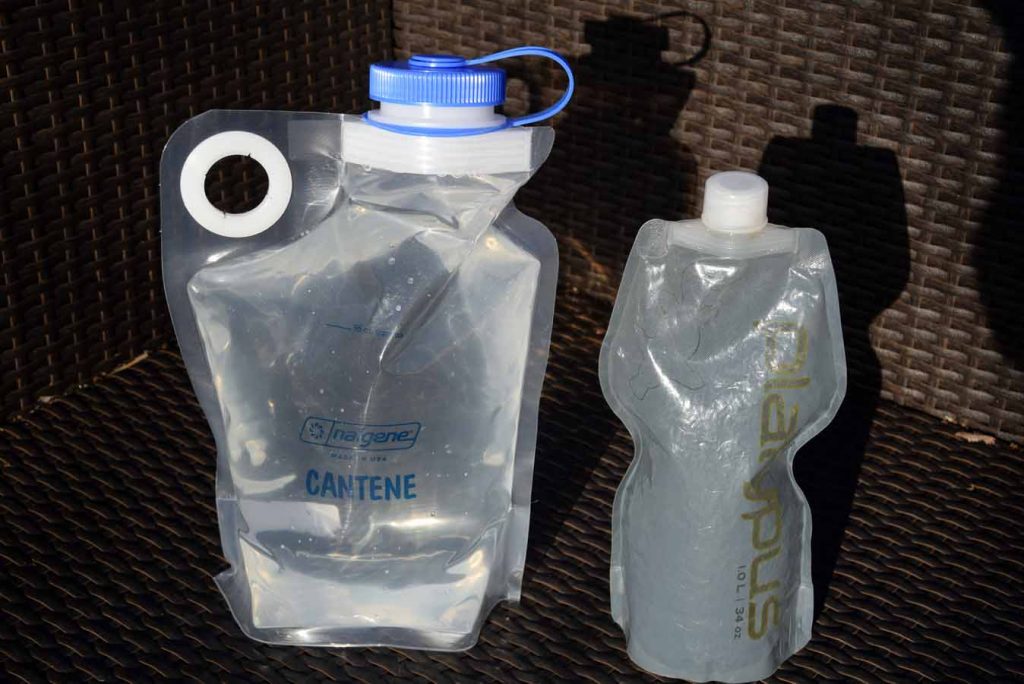
Soft Water Reservoir

Hanging prayer flags at 5,100 metres in Bhutan
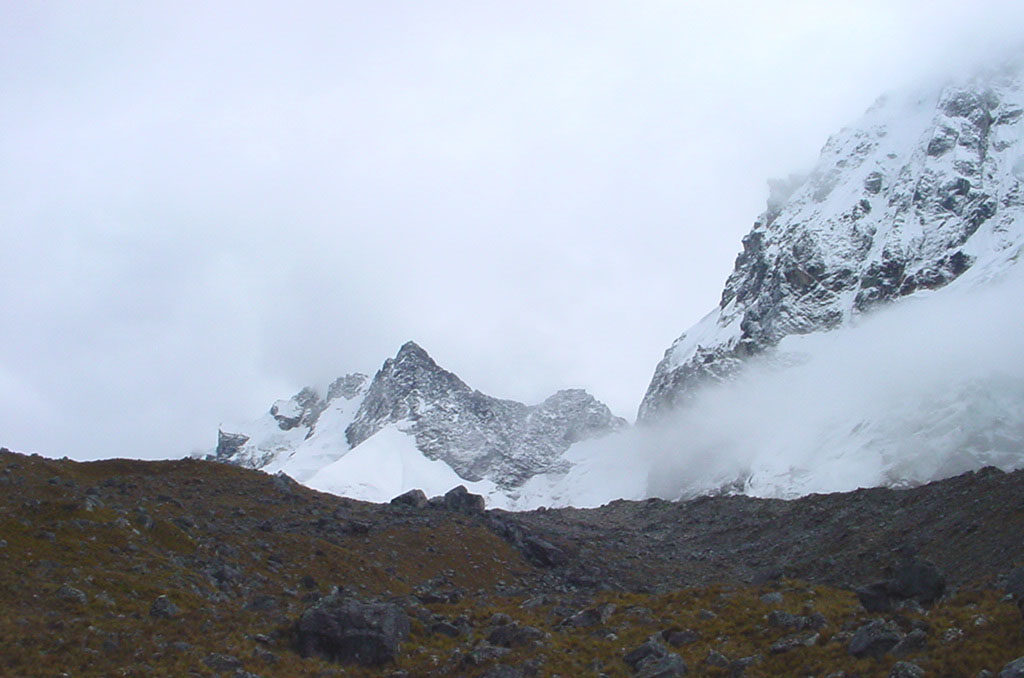
Salkantay Pass (4,600 metres) – walking past the summit of Mt Salkantay in Peru
Last words
Neither Gill or I are fans of peak bagging but we do love high altitude scenery particularly in Bhutan so will tolerate the altitude to experience the natural environment on offer. The main thing to remember when planning an adventure at altitude is to plan well in advance and build up your fitness as best you can.